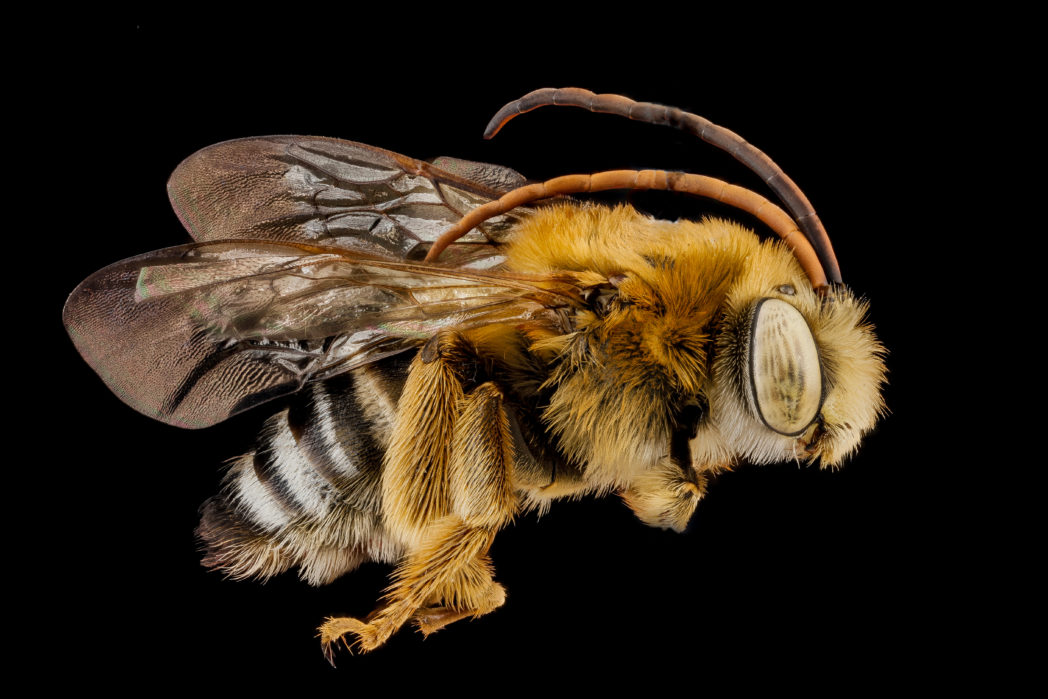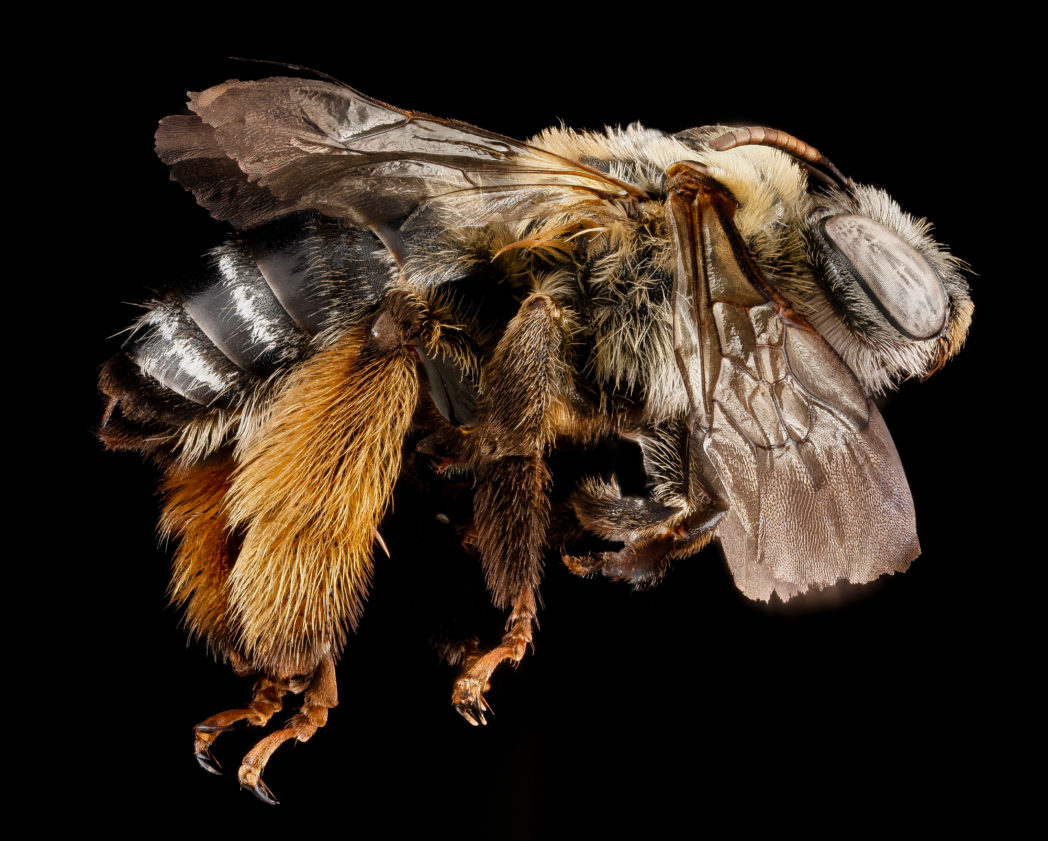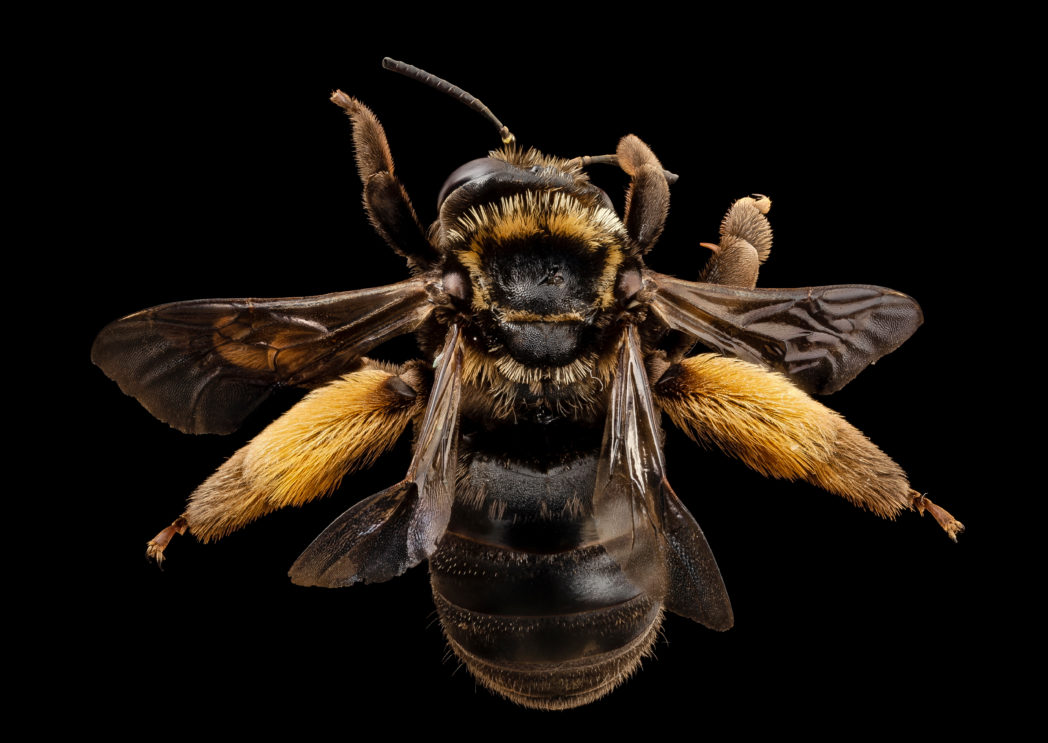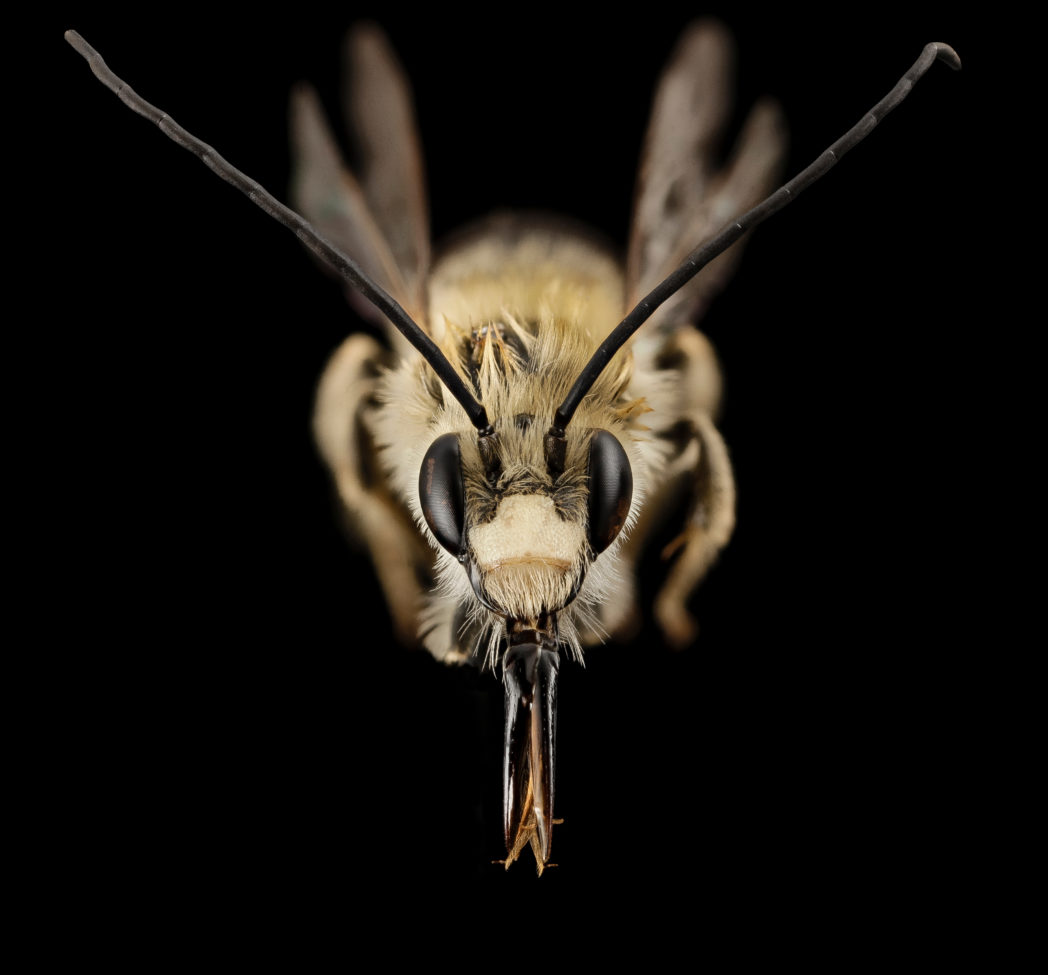Long-horned bees
by Jonnie Dietz, Florida Museum of Natural History
“Know your native pollinators” is a series of articles that will help you identify and appreciate Florida’s varied pollinators, including bees, wasps, butterflies, moths, beetles, flies, birds and bats. Eucera dubitata. Photo courtesy of USGS Native Bee Inventory and Monitoring Laboratory.
Long-horned bees can be difficult to tell apart, but males are easy to spot with their extraordinarily long antennae!
CLASSIFICATION
Class: Insecta
Order: Hymenoptera
Family: Apidae
Subfamily: Apinae
Tribe: Eucerini
FORAGING PREFERENCES
Foraging preferences for long-horned bees vary, but you’re sure to attract a variety of species with the following plant groups:
- Asters, sunflowers, daisies (Asteraceae family)
- Pricklypear (Opuntia spp.)
- Legumes (Fabaceae family)
- Pickerelweed (Pontederia spp.)
IDENTIFICATION
The Eucerini tribe is collectively referred to as the “long-horned bees,” but some genera within this tribe have other common names such as squash bees and sunflower bees.
As a whole, long-horned bees tend to be large and hairy, with especially hairy hind legs for collecting pollen. Most species have black abdomens that are striped with white or pale yellow hair. Males boast the most distinctive feature of this group — long antennae that often exceed the length of their bodies!
All species are solitary ground nesters, though some will nest in large aggregations. Florida’s long-horned bees typically fall into one of the following genera: Melissodes, Eucera, Florilegus, Xenoglossa, or Svastra.


The antennae of the male long-horned bee (Melissodes communis) (pictured above, top) are longer and more obvious than that of the female (pictured above, bottom). Photos courtesy of USGS Native Bee Inventory and Monitoring Laboratory
Long-horned bees (Melissodes, Eucera and Florilegus spp.)
Genus: Melissodes
Most of Florida’s long-horned bees are in the genus Melissodes. These fall fliers tend to forage on composite flowers (Asteraceae), and many are specialists on plant groups within this family.
At night, females return to their nests to sleep, but male Melissodes bunk together out in the open. Groups of males with gather on plant stems, tightly grip the stalks with their jaws (mandibles) and hold on tight until morning. Some species will even return to the same plants night after night.
Genus: Eucera
Males of this group are aggressive suitors — they emerge before their female counterparts and will swarm over nest entrances waiting for a virgin female to appear. As soon as she crawls out of her nest, she’s greeted by several males who compete (sometimes to the death) to be the first to mate with her. Amazingly, once the female has mated, her scent changes and males look elsewhere for love.
Unlike other long-horned bees, Eucera are rarely spotted on flowers in the sunflower family (Asteraceae). Bees in this genus tend to be found in northern Florida, and prefer to nest in sandy or clay soils.
Genus: Florilegus
Only one species of this genus occurs in the United States, and it’s found throughout much of Florida. These bees will forage on many flowers, but prefer legumes (Fabaceae) and pickerelweeds (Pontederia spp.).
Squash bees (Xenoglassa spp.)
Squash bees, as their name suggests, specialize on squash plants (Cucurbita spp.) and are important pollinators of both wild and cultivated squash species. These bees are early risers (they’ve been spotted as early as 4:00am!), but retire early as well. Females return their nests in the early afternoon, while males take refuge inside wilted squash flowers.

Svastra obliqua. Photo courtesy of USGS Native Bee Inventory and Monitoring Laboratory.
Sunflower bees (Svastra spp.)
These are large bees limited to the Western Hemisphere. Appropriately named, many sunflower bees are important pollinators of sunflowers. While some species are generalists, others specialize on just one group within the sunflower family.
References:
- The Bees of Florida. John B. Pascarella, Ph.D., Dean of the College of Sciences, Professor of Biological Sciences, Sam Houston State University, Huntsville, Texas. http://entnemdept.ufl.edu/HallG/Melitto/Intro.htm
- Michener, Charles D. The Bees of the World. Baltimore: Johns Hopkins U Press, 2010. Print.
- “Florida’s Native Bees.” Jaime Pawelek. http://www.floridasnativebees.com
- Mitchell, Theodore B. Bees of the Eastern United States, Volume 2. Raleigh, NC: Published by the North Carolina Agricultural Experiment Station with Support from the National Science Foundation, 1962. Print.
- Wilson, Joseph S., and Olivia Messinger Carril. The bees in your backyard: a guide to North America’s bees. Princeton: Princeton U Press, 2016. Print.
- The Xerces Society. Attracting Native Pollinators: The Xerces Society Guide to Conserving North American Bees and Butterflies and Their Habitat. North Adams, MA: Storey Pub., 2011. Print.

